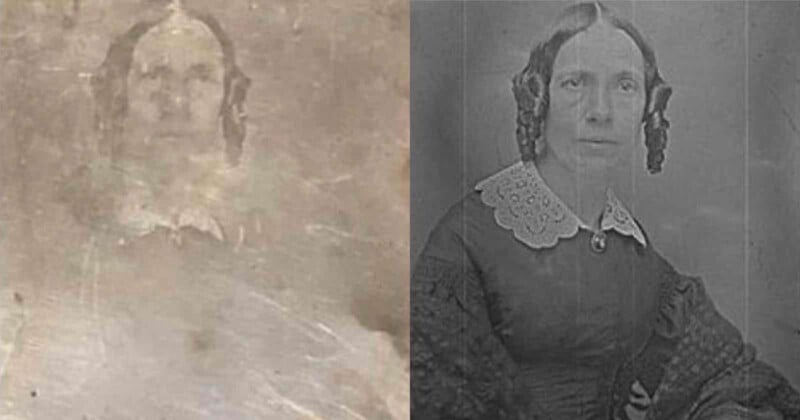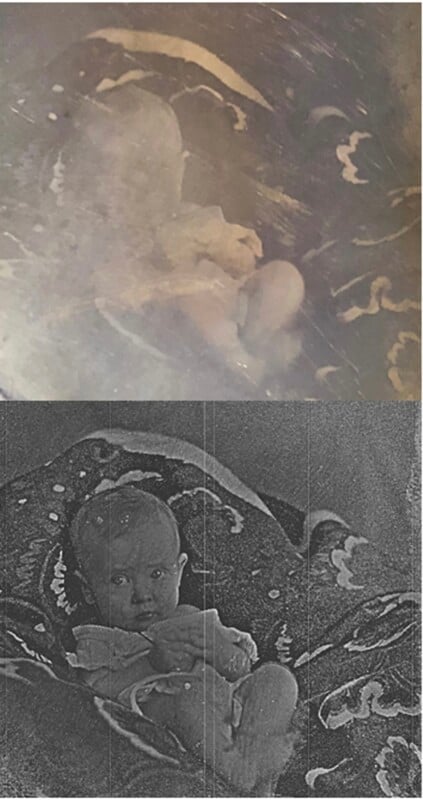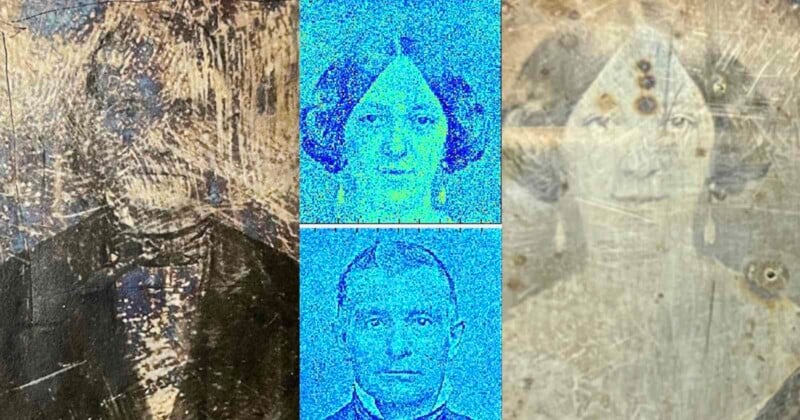
Researchers have developed a new technique for salvaging tarnished 19th-century daguerreotype photographs and revealing images that otherwise “seemed lost forever.”
In a study published this month, a team of researchers from Western University in Ontario, Canada revealed that they had developed a new synchrotron imaging technique for retrieving images from highly-corroded 200-year-old daguerreotypes.

Over time, the “image particles” in daguerreotypes are corroded from exposure to the environment and from being in contact with the glass that protects the plate.

However, the research team led by Professor Tson-Kong (T.K.) Sham found that their novel technique — which builds on a strategy that they first reported in 2018 — can be used no matter how badly damaged the surface of the image is from natural corrosion or cleaning attempts.
Revealing Images That Seemed Lost Forever
According to a report in Newsweek, the team of scientists first hypothesized that they might be able to use narrow beams of X-ray radiation to retrieve highly corroded and tarnished daguerreotype images back in 2018.
“Since then, we improved the capabilities of the techniques and we can get much better images,” Sham says. “In order to do that, we have to use much softer X-rays.”
Newsweek reports that for the latest study, Sham and his team applied “softer X-rays” that are available at the Canadian Light Source (CLS), a national research facility that offers the only synchrotron light source — a type of particle accelerator that is capable of producing extremely bright light — in Canada.
Sham and his team applied their synchrotron light technique at the CLS facility to daguerreotype plates from the 19th century. These daguerreotypes, which belong to private collectors and the National Gallery of Canada, were badly tarnished — likely thanks to deterioration over time and possible cleaning attempts.
However, the researchers managed to uncover daguerreotype images of a man and woman dressed in mid-1850s garments as well as a photograph of of a baby wrapped in covers using this synchrotron light technique.
The researchers demonstrated that their technique was always effective as long as the image particles underneath the tarnish remained intact.
“Revealing images that seemed lost forever is what’s most exciting,” Sham says.
“We get a glimpse of people living in the 19th century that we wouldn’t have otherwise and learn about their history and culture.”
The research also showed the same X-rays that can help researchers “see” through the corrosion on the surface of daguerreotypes can also indirectly lead to damaging the plates.
“X-ray usually doesn’t damage metals visibly, so I didn’t think it would affect the plates, but perhaps chemical impurities or the corrosion itself on the daguerreotype got heated and left a small mark where the X-ray beam light went through,” Sham explains.
Each Daguerrotype is Unique
Invented in 1839 and only popular for about 25 years, daguerreotypes are silver-coated copper plates treated with specific chemicals such as bromine gas to make them light-sensitive.
Once placed in a camera, the cap would be removed to “impress” the image on the plates—a time-consuming process. Then, the plates would be treated with mercury vapor to fix the images permanently.
Because the process does not involve the use of negatives, each daguerreotype photograph is unique. As a result, the team’s research could be a game-changer for the conservation of these antiques.
The full study is published by The Journal of Cultural Heritage.
Image credits: All photos via “Retrieving images from tarnished daguerreotypes using X-ray fluorescence imaging with an X-ray micro beam with tunable energy” by Tsun-Kong Sham et al published in Journal of Cultural Heritage.
